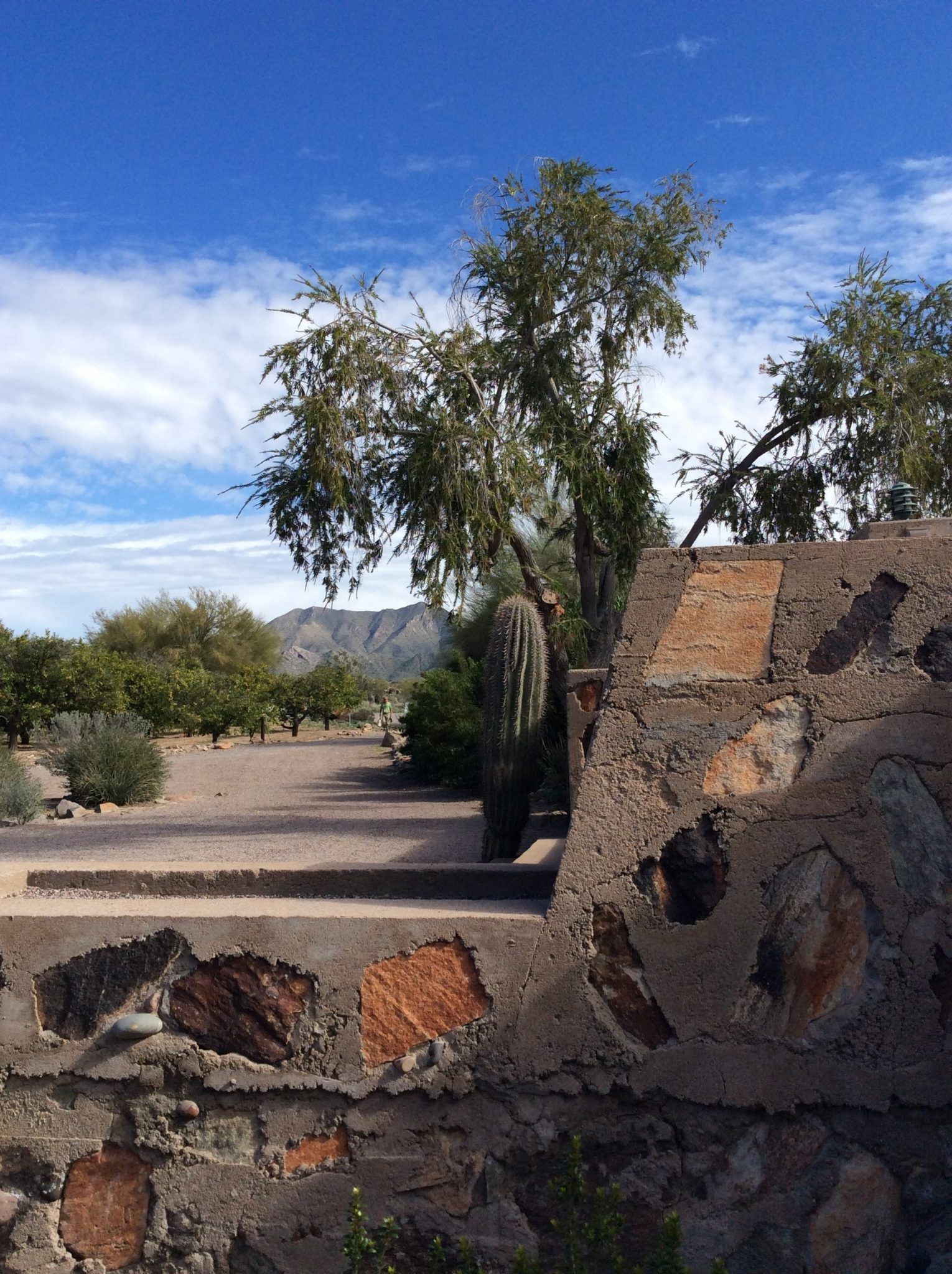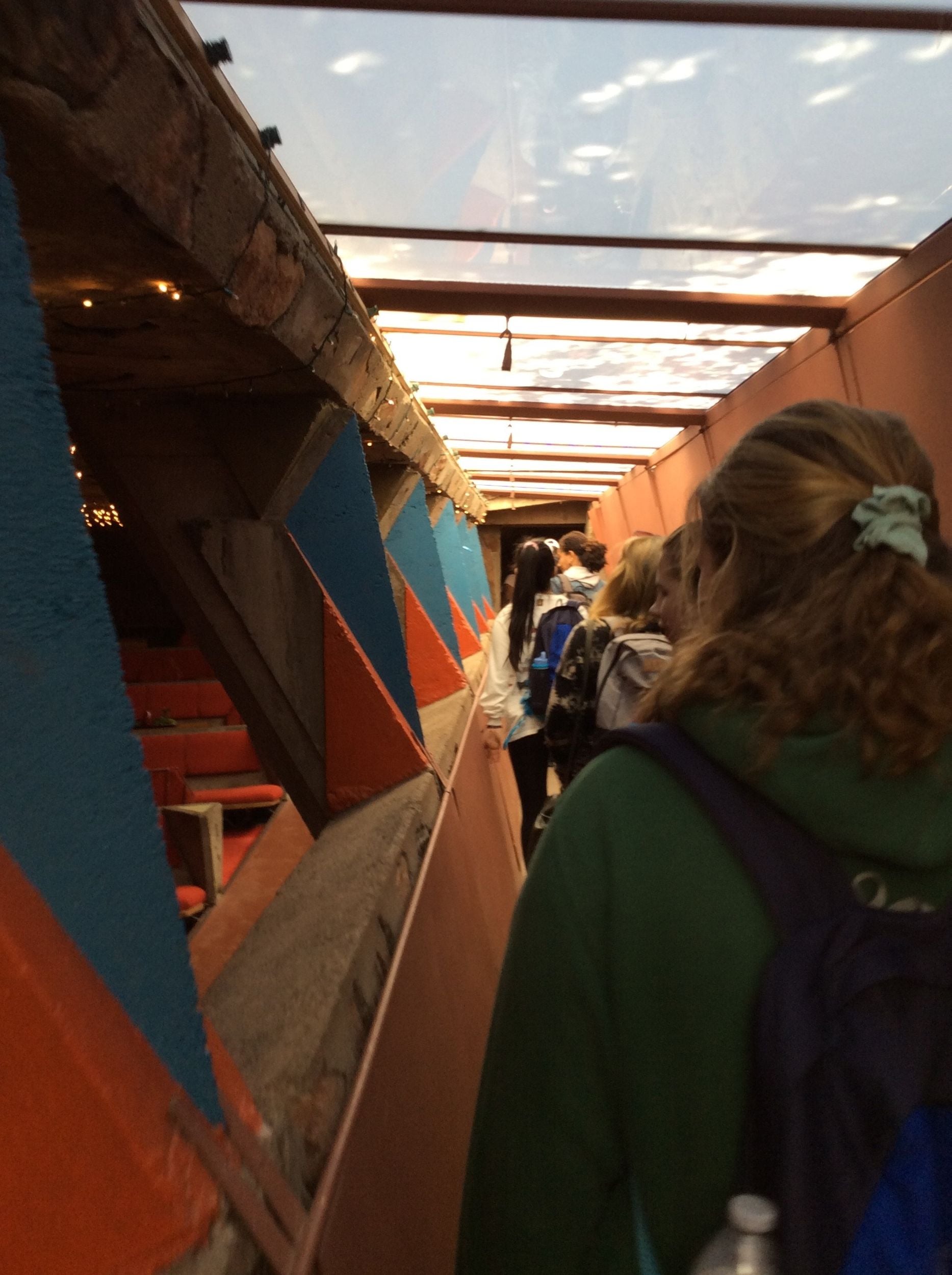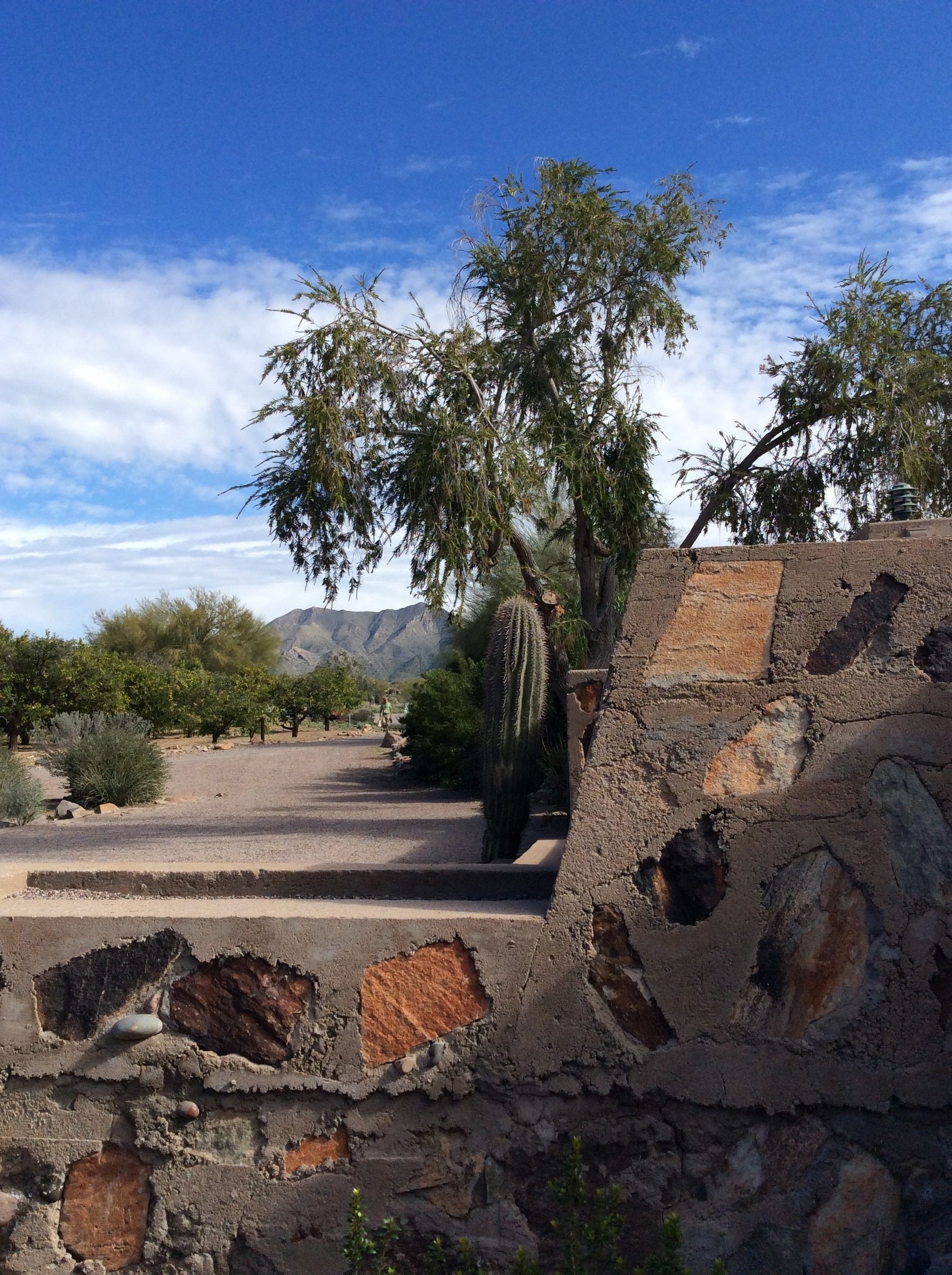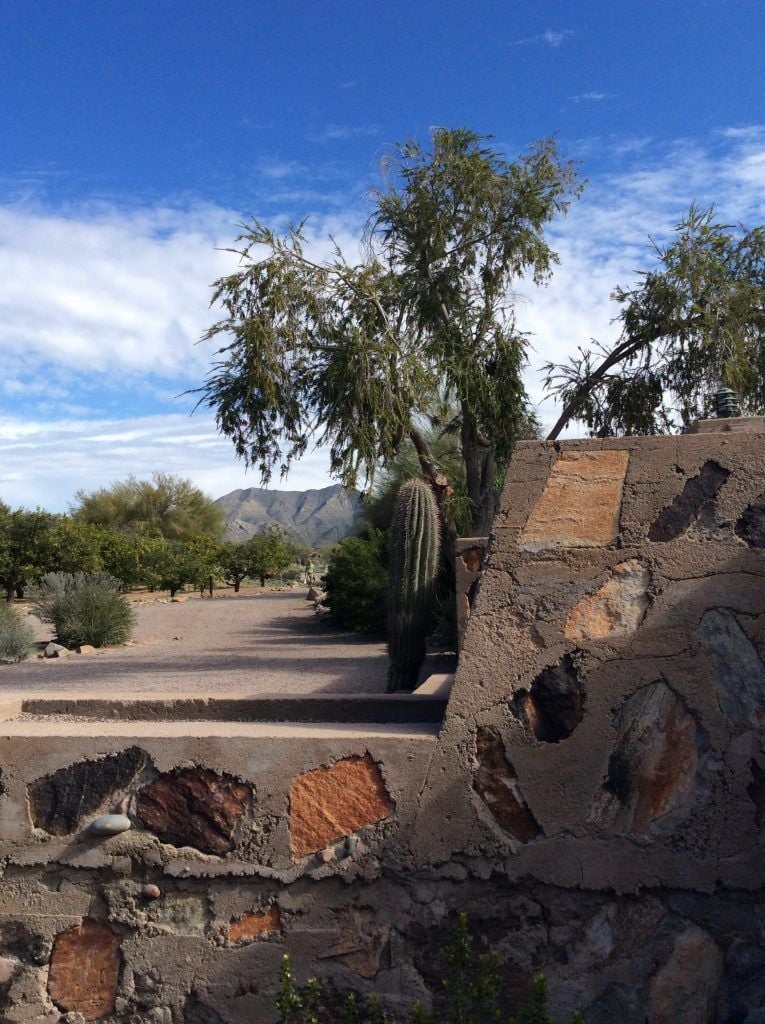Hunter Keller ’20 reflects on the groups visit to Frank Lloyd Wrights Winter Desert Camp, an iconic example of “American Architecture.”
Thirteen Deerfield students stepped off the bus into a seemingly new world, surely unlike our corner of Western Massachusetts. The air was fresh and cooler than we had anticipated and our surroundings were both dry and luscious with flowers and needles perking up from each crevice. Marla, our tour guide, pointed out the fresh bloomings from the recent Phoenix rain. She showed off her favorite spots in Frank Lloyd Wright’s winter camp, a property she continuously defined as “American architecture.” Each angle, window, and decor element carried a story Marla was eager to share with us. We learned about the significance of the low-level ceilings and round tables. Wright, valuing equality, wanted visitors to sit on the same level and to have uniform positions in the table layout.
Marla was especially enthusiastic to tell us about how the famous architect’s progressive views played out with his apprentices. She recalled that, in one session, two students of twenty-three students were female. We all make anxious eye contact. The number felt startlingly low, considering our ~50% female-identified student body. But in the 1950’s, that ratio was progressive. I began to understand the way that time and experiences shaped our definitions. Our tour guide’s beliefs were rooted in a different generation, while ours continue to develop as a result of contemporary experiences. This same concept was present in her explanation of background inspiration, or lack thereof. Among the numerous styles of décor, there were always distinct Asian influences. Our group began to question if it was even fair to categorize his work as American.
One student argued that, at the core, being American means participating in a melting pot of identities. So where should we draw the line between appreciating and appropriating cultures? The group came to a consensus that our history lesson for the day was missing some bits and pieces. We only briefly touched the ownership of the land and definitely failed to discuss who once called this place home. Indigenous peoples were lost within the heroic story of “American architecture.” How did some stories become sole truth and others slip between the cracks? None of us have answers to these lingering questions, but today taught me to keep asking them.



